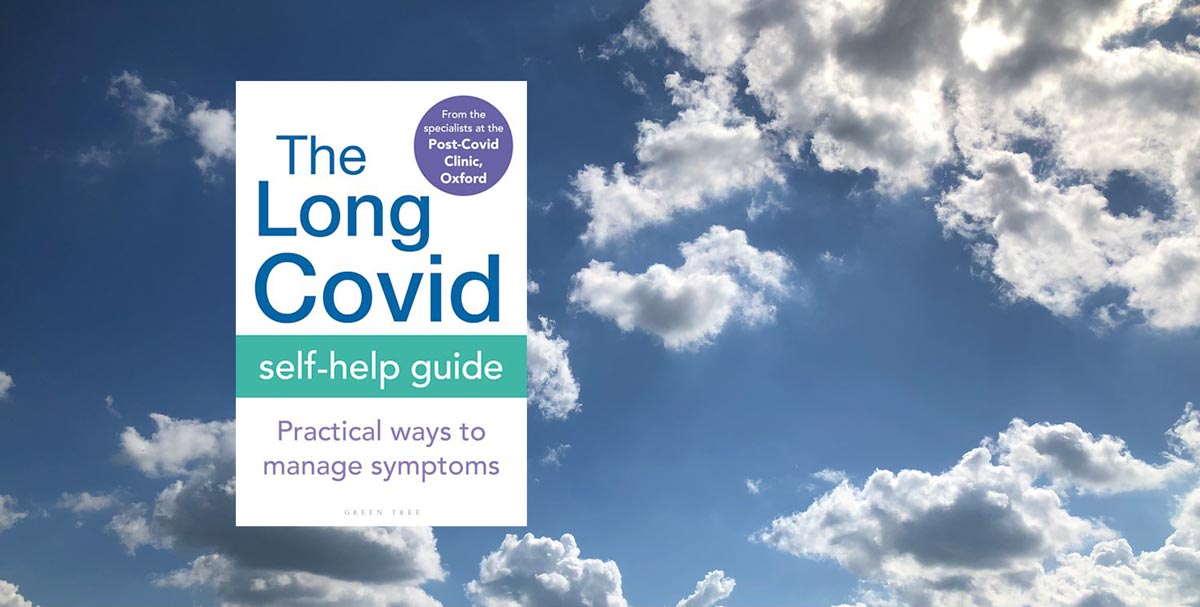
‘I’m not sure I know any doctors who don’t have a Plan B now. Everyone’s thinking, I can’t do this for ever. And they can’t. The NHS is 110,000 members of staff short at the moment – we can all work out where the problem is. It’s something no amount of soundbites are going to sort. It needs money spent and it needs money spent in the right places. We need to recruit and we need to retain – because there’s no point running the bath if the plug isn’t in. When I left in 2010, I was the outlier as someone who left the NHS. There had only been one other person in my cohort of 300. But, with no end in sight, you would have to be deranged not to think ‘I can’t maintain this level of work for ever.’
Adam Kay, speaking to The Big Issue in February 20221
…12,250 GPs could be ‘lost to the profession within five years’…
The above is a long quote from Adam Kay, but to maintain the full sentiment of his remarks, it would not do him justice to cut it short. Adam Kay left a senior training post in Obstetrics and Gynaecology and the last chapter of his book ‘This is Going to Hurt’ details the reasons why. I thought of Adam Kay when the results of the latest GP Worklife Survey were published; the survey warns of a mass exodus from the profession with a third of the respondents stating their intention to quit direct patient care within five years.2 If these results were extrapolated to the headcount of 37,123 GPs, 12,250 GPs could be ‘lost to the profession within five years’.3 And of those GPs under the age of 50, 16% are thinking of leaving their role within five years.
Several GP leaders have picked over the wreckage of the findings and suggest any number of reasons why GPs do not want to work face-to-face, citing ‘burnout’, exhaustion from the Covid pandemic and long working hours. The especially worrying aspect of the Worklife Survey is that so many GPs are thinking of leaving so early in their careers. But is there any evidence to tell us why GPs leave their jobs?
Why do GPs leave?
Turnover in the medical profession has been a growing concern over the past 15 years, and several studies have tried to unpick the reasons why. In 2016, Natasha Doran and colleagues found that the overarching reason why early-stage GPs left their jobs was the ‘changing role of general practice and its impact’. Once job satisfaction was negatively impacted, ‘the combined pressures of increased patient demand and the negative media portrayal left many feeling unsupported and vulnerable to burnout and ill health, and, ultimately, to the decision to leave general practice.’4 Another study of GPs in central England found that GPs planned to leave practice due to the volume of workload, time spent on ‘unimportant tasks’ and lack of job satisfaction. GPs also cited the impact of work-related pressures, growing workload, and the consequent stress’.5
More in-depth qualitative research builds on these themes of pressure, workload and job satisfaction. An interview study of GPs in the South West of England from 2016 considered the factors influencing GPs reasons for wanting to leave direct patient care.6 Again, there was no one headline reason why GPs wanted to leave; the reasons were complex and based on ‘a range of job-related and individual factors’. GPs reported frustrations around the unrealistic expectations of what GPs could or should deliver, coupled with frustration around being undervalued.
The results from these studies resonate with each other. To bring together research in this area, a systematic review of qualitative research published in 2020 aimed to synthesise and unpick the reasons why GPs leave direct care. Most of the included studies were UK-based, and the authors describe how the dynamics around low job satisfaction and other combined pressures such as workload and stress leave GPs feeling ‘unsupported and vulnerable to burn-out and ill health, and ultimately the decision to leave general practice’.7
These studies suggest that GPs seem to be able to cope until the point where their job satisfaction dips, then the multiple pressures of practice create an untenable load.
These studies suggest that GPs seem to be able to cope until the point where their job satisfaction dips, then the multiple pressures of practice create an untenable load. This sounds like a classic ‘Swiss cheese model‘ of medial error to me; or perhaps a tipping point at which GPs say ‘enough is enough’. And in terms of the association between intention and action, previous research has shown the probability of leaving a job increases when GPs state an intent to leave, and of those who leave their jobs, the majority do not return.8
The above studies, however, were conducted before the COVID-19 pandemic and a lot has changed in the past two years, probably not for the best, in terms of how GPs view their careers. We need up to date, in-depth understanding about the ‘Why is this happening?’, in order to think about the ‘How do we even begin to fix this?’ And lest the problem falls into the political trap of endless measurement of the problem – some planning and research into solutions would also be welcome.
The future of the workforce crisis – a plea
The government’s promises on increasing GP numbers have not yet come to fruition, so what can we really expect from the policymakers in terms of real, ‘un-spun,’ action to increase GP numbers? Ominously, the workforce crisis amongst doctors is not new or limited to primary care. Reflecting back on Adam Kay’s quote, is the end of this workforce crisis ever going to be in sight, and if not, how long can we continue to work in an increasingly deranged system? Research has identified many, fixable, problems – this needs to be a focus for ongoing research, innovation and policy.
References
- Lobb A. Adam Kay: ‘Before the pandemic the NHS was running on empty and it turned out those were the good old days’: The Big Issue; 2022 [Available from: https://www.bigissue.com/life/health/adam-kay-before-the-pandemic-the-nhs-was-running-on-empty-and-it-turned-out-those-were-the-good-old-days/.
- Odebiyi BW, B.; Gibson, J.; Sutton, M.; Spooner, S.; Checkland, K. Eleventh National GP Worklife Survey 2021. Policy Research Unit in Commissioning and the Healthcare System.
- Bostock N. 12,000 GPs plan to quit within five years, major survey suggests: GP Online; 2022 [Available from: https://www.gponline.com/12000-gps-plan-quit-within-five-years-major-survey-suggests/article/1752892.
- Doran N, Fox F, Rodham K, Taylor G, Harris M. Lost to the NHS: a mixed methods study of why GPs leave practice early in England. Br J Gen Pract. 2016;66(643):e128-35.
- Dale J, Potter R, Owen K, Parsons N, Realpe A, Leach J. Retaining the general practitioner workforce in England: what matters to GPs? A cross-sectional study. BMC Fam Pract. 2015;16:140.
- Sansom A, Terry R, Fletcher E, Salisbury C, Long L, Richards SH, et al. Why do GPs leave direct patient care and what might help to retain them? A qualitative study of GPs in South West England. BMJ Open. 2018;8(1):e019849.
- Long L, Moore D, Robinson S, Sansom A, Aylward A, Fletcher E, et al. Understanding why primary care doctors leave direct patient care: a systematic review of qualitative research. BMJ Open. 2020;10(5):e029846.
- Hann M, Reeves D, Sibbald B. Relationships between job satisfaction, intentions to leave family practice and actually leaving among family physicians in England. Eur J Public Health. 2011;21(4):499-503.









Nada Khan is an Exeter-based NIHR Academic Clinical Fellow in general practice and GPST4/registrar, and an Associate Editor at the BJGP. She is on Twitter: @nadafkhan
The NHS is clear on how the health service should respond to an emergency. In a life-threatening situation, the target ambulance response time is seven minutes. In an emergency that needs rapid assessment and treatment (what the ambulance services calls a Category 2 incident), the average ambulance response time should be 18 minutes.
Unfortunately, as a recent report from the Nuffield Trust describes, ambulance response rates have deteriorated significantly since May 2021.1 Instead of 18 minutes for a Category 2 incident, the average response rate in June 2022 was 51 minutes.2 That is a long time to wait for an ambulance in stroke, heart attack or sepsis where time is of the essence, especially when the best outcomes come from rapid interventional procedures to limit ischaemic damage. The wait times for Category 3 calls (tags response time of 2 hours), which are classified as urgent but not life-threatening (think, an elderly person falling over at home) have suffered even further with an average wait time of over 2 hours and 50 minutes hours, with a 90th centile response standard of over 7 hours.
Ambulance wait times matter. Data from a German registry analysis demonstrated that each extra minute of ambulance wait time was associated with a 5% reduction in the probability of survival following an out of hospital cardiac arrest, results that have been replicated in a Swedish study that found shortening ambulance wait times was associated with a reduction in 30-day mortality.3,4
The causes of these increased waits are complex and are a symptom of pressures within the NHS and social care system. Waits for social care mean it is difficult to discharge patients from hospital, which means there is a lack of hospital beds, which means that A&E staff can’t get patients out of their department, and ultimately, paramedics queuing outside hospitals can’t hand their patients over to A&E staff. There is a strong correlation between ambulance handover delays and increasing ambulance response times.5 In the face of system pressures, staff on the ground have limited influence over social and community care, and alone are ‘unable to resolve the challenges relating to the discharge of patients to the right place of care’.5
BJGP Life has published reflections on physician burnout, but what about our paramedic colleagues? In a survey of ambulance staff in the north of England, more than 50% felt ‘burnt out’ and 87% had some degree of depersonalisation (including detachment and reduced empathy) towards their work; these feelings can impact staff retention.6 The parallels with the GP workforce crisis are dispiriting. With increasing pressure on the ambulance service it’s no surprise that paramedics are feeling overwhelmed.
The definitive solution will involve building stronger social care services and improving patient flow through hospitals, but that is a longer-term goal that requires the Department of Health and Social Care to address current failings in social care provision and improve flow out of hospitals. If ambulance wait times continue to be long, what research has been done into potential innovative, and short-term solutions? Avenues to improve care for patients calling for emergency services might include community interventions, approaches to ensure speedy handover of patients from ambulances to A&E departments, and thinking about how primary care can support patients waiting for ambulances.
In terms of community interventions, research has considered whether community responders can be deployed in the most life-threatening situations. In Germany, a study of alerting CPR trained volunteers to rapidly attend incidents showed a reduction in the resuscitation-free interval, but long-term patient outcomes were unclear.7 Similarly, the London Ambulance Service has partnered with the GoodSAM app, which alerts trained volunteers to nearby cardiac arrests. An early evaluation in out of hospital cardiac arrests showed that early response using the GoodSAM app was associated with improved survival, though the number of responses to alerts was fairly low and the study was not powered to find differences in survival.8 There is potential to further evaluate early response mechanisms in the most life-threatening situations, but volunteer services have not been studied in Category 2 or 3 emergencies.
Paramedics need to be able to hand their patients over safely and rapidly to hospital teams. A letter to NHS and Ambulance Trusts from NHS England dated 15 July in light of the UK heatwave suggested the creation of pre-A&E observation areas to facilitate ambulance handovers within 30 minutes. This strategy might free up ambulance teams, but what is unclear is both how hospitals will magic up the space and staff to create these observation areas and the impact on patient outcomes of simply shifting the wait from inside the ambulance to inside the hospital.
When wait times for ambulances are long, would that change what a GP recommends in terms of how a patient should get to hospital in an emergency? I’m thinking of, for instance, an unwell child needing admission who we might want transported in an ambulance in case of an acute deterioration, but not waiting at home for 2 hours for said transport. Not surprisingly, I was unable to find any research evidence comparing safety outcomes with private transport versus ambulance to hospital; this would be an ethically challenging trial to run. The NHS might be clear about how the health service should respond to an emergency, but in the community, decisions will increasingly be made on the knife-edge of prognostication as GPs and patient balance the risks of deterioration against ambulance response times.
References
1. Ambulance response times. Nuffield Trust; 2022 4 May 2022.
2. England N. Ambulance quality indicators data 2022-23 2022 [Available from: https://www.england.nhs.uk/statistics/statistical-work-areas/ambulance-quality-indicators/ambulance-quality-indicators-data-2022-23/.
3. Burger A, Wnent J, Bohn A, Jantzen T, Brenner S, Lefering R, et al. The Effect of Ambulance Response Time on Survival Following Out-of-Hospital Cardiac Arrest. Dtsch Arztebl Int. 2018;115(33-34):541-8.
4. Holmen J, Herlitz J, Ricksten SE, Stromsoe A, Hagberg E, Axelsson C, et al. Shortening Ambulance Response Time Increases Survival in Out-of-Hospital Cardiac Arrest. J Am Heart Assoc. 2020;9(21):e017048.
5. Branch HSI. Harm caused by delays in transferring patients to the right place of care. June 2022.
6. Beldon RG, J. Burnout in frontline ambulance staff. Journal of Paramedic Practice. 2021;14(1).
7. Stroop R, Kerner T, Strickmann B, Hensel M. Mobile phone-based alerting of CPR-trained volunteers simultaneously with the ambulance can reduce the resuscitation-free interval and improve outcome after out-of-hospital cardiac arrest: A German, population-based cohort study. Resuscitation. 2020;147:57-64.
8. Smith CM, Lall R, Fothergill RT, Spaight R, Perkins GD. The effect of the GoodSAM volunteer first-responder app on survival to hospital discharge following out-of-hospital cardiac arrest. Eur Heart J Acute Cardiovasc Care. 2022;11(1):20-31.
Featured image by Ian Taylor on Unsplash
In a podcast recorded by the Medical Republic, Jens Sondergaard outlined six main reasons it’s great to work in Danish general practice. Nada Khan weighs up the evidence for moving to Denmark.
Carter Singh is a GP in Nottinghamshire. He is the chairman of the Nottinghamshire LMC and a national council member of the RCGP. The decision…
[…] feels like an almost unbelievable situation given the focus in past years on the GP recruitment and retention crisis, but senior general practice leaders are now warning of an employment crisis in general practice. […]